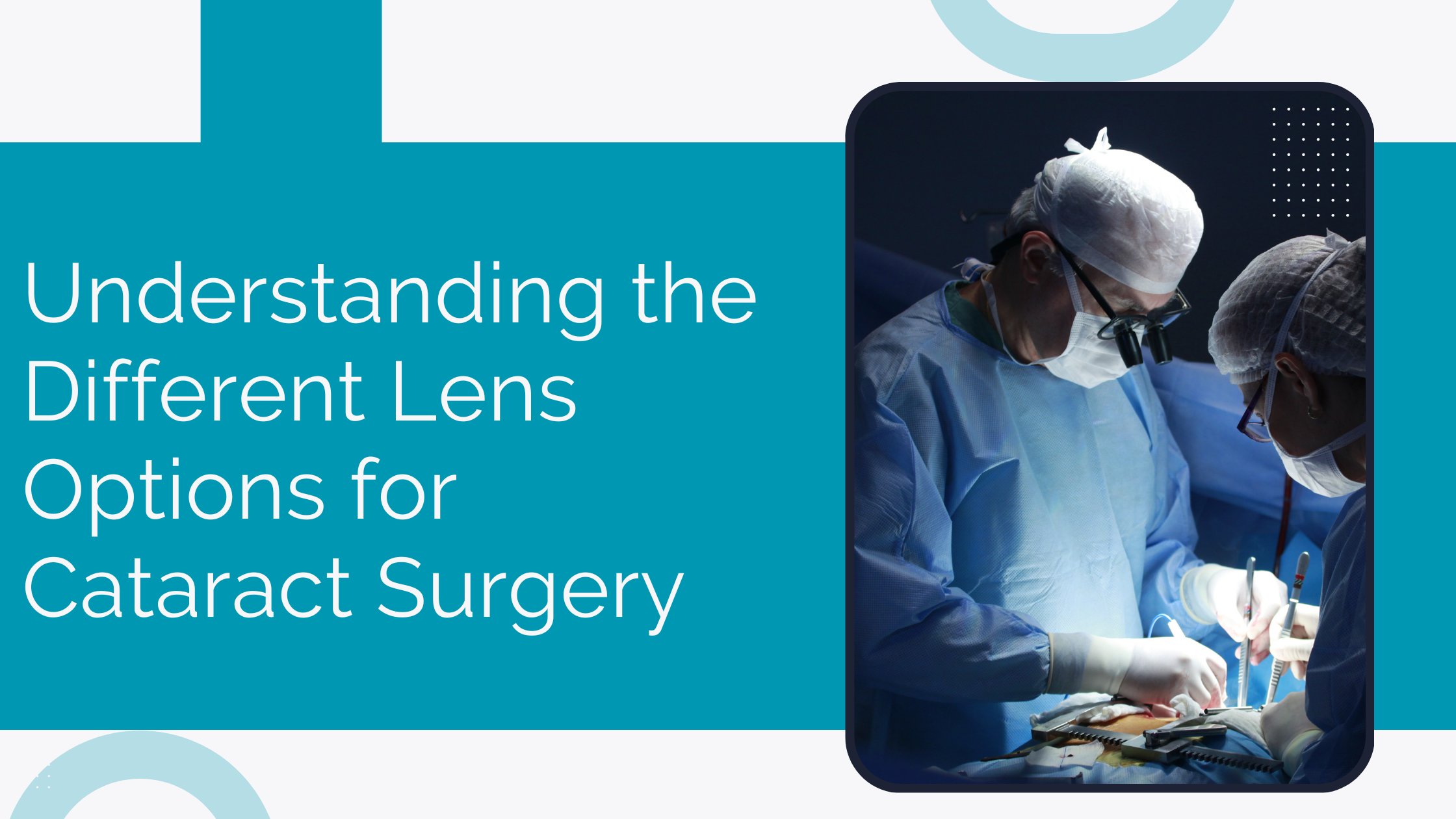Cataract surgery has undergone significant advancements in the past few decades, and one of the most vital decisions for patients undergoing this procedure is selecting the correct type of intraocular lens (IOL). These artificial lenses replace the natural, clouded lens of the eye during cataract surgery and play a pivotal role in restoring vision quality. With a wide range of lens options now available, understanding which type of IOL best suits your lifestyle and visual needs can be a game-changer in achieving optimal outcomes from the surgery. For those seeking expert cataract treatment in Mumbai, making an informed choice about lens options is crucial, and always be guided by an experienced ophthalmologist.
Why the Right Lens Matters in Cataract Surgery
Cataracts occur when the natural lens of the eye becomes cloudy, leading to blurred vision, glare, and difficulty in performing daily activities. Cataract surgery involves removing this clouded lens and replacing it with an artificial intraocular lens. But not all lenses are created equal—each type comes with its advantages, limitations, and suitability depending on the patient’s lifestyle, eye health, and vision goals.
Choosing the appropriate lens can affect not only how you see post-surgery but also how much you rely on glasses. Hence, a deep understanding of the available options becomes essential.
The Various Intraocular Lens (IOL) Options
Let us explore the different types of intraocular lenses that patients may consider during cataract surgery:
1. Monofocal Lenses
Monofocal lenses are the most commonly used IOLs and have a single focus strength. They are generally set to focus on distance vision. Patients with these lenses will typically require glasses for near tasks such as reading or working on a computer.
Pros:
- Proven track record with high visual clarity for distance.
- Often covered by insurance or included in standard surgical packages.
Cons:
- Dependence on reading glasses or bifocals for near vision.
- Cannot correct astigmatism unless paired with additional procedures.
Monofocal lenses are ideal for individuals who prioritize distance vision and are comfortable using glasses for near work.
2. Multifocal Lenses
Multifocal lenses are designed to offer vision correction at multiple distances—near, intermediate, and far. These lenses work similarly to progressive eyeglasses.
Pros:
- Reduce or eliminate the need for glasses after surgery.
- Suitable for active individuals who want greater visual freedom.
Cons:
- May cause glare or halos, especially in low-light conditions.
- An adjustment period may be required.
This option suits individuals with dynamic lifestyles who want to reduce their dependence on eyewear across all visual ranges.
3. Toric Lenses
Toric lenses are specifically designed to correct astigmatism along with cataracts. An uneven curvature of the cornea or lens causes astigmatism, a refractive error that produces hazy or distorted vision.
Pros:
- Corrects cataracts and astigmatism in one procedure.
- Provides sharper, clearer vision compared to traditional lenses for astigmatic patients.
Cons:
- It may come with an added cost.
- Typically, glasses may still be required for near tasks.
Toric IOLs are recommended for patients with moderate to high astigmatism looking to enhance their uncorrected vision.
4. Extended Depth of Focus (EDOF) Lenses
A relatively newer innovation, Extended Depth of Focus lenses provide a continuous range of vision, particularly enhancing intermediate vision (like working at a computer), while maintaining good distance vision.
Pros:
- Improved visual quality across a wider range.
- Reduced incidence of halos and glare compared to multifocal lenses.
Cons:
- Reading glasses might still be required for very close tasks.
- Slightly more expensive than monofocal lenses.
EDOF lenses are ideal for patients who spend considerable time on digital devices and want more independence from glasses.
5. Accommodative Lenses
These lenses mimic the natural focusing ability of the eye by shifting position within the eye to accommodate different focal points.
Pros:
- Provide a broader range of focus compared to monofocal lenses.
- Better contrast sensitivity.
Cons:
- Variable results depending on the individual’s eye anatomy.
- May still require glasses for some tasks.
Accommodative lenses are best suited for those desiring a more natural vision experience post-surgery.
Key Considerations Before Choosing a Lens
Choosing the right IOL requires a personalized approach. Here are a few factors that an ophthalmologist considers before suggesting a specific lens type:
- Your lifestyle: Do you read a lot, work on computers, or drive often?
- Your visual goals: Are you looking to eliminate glasses fully or reduce dependence?
- Eye health: Pre-existing conditions like macular degeneration or astigmatism can influence the choice.
- Budget: Some advanced lenses may not be covered by insurance and can affect the overall cataract surgery cost in Mumbai.
Expert Guidance is Essential
Dr. Vinay K Agrawal (M.B.B.S., M.S. (ophthalmology), D.N.B. (Ophthalmology), Cornea Fellow, L.V.Prasad Eye Institute) is one of the most recognized ophthalmologists in Mumbai from the past 30 years and counting. Over the decades, he has acquired extensive experience in cataract, cornea, and refractive surgery—making them his core areas of expertise. His commitment to patient education and advanced surgical methods ensures that every patient receives tailored care aligned with the highest medical standards.
What to Expect at the Time of Consultation
When you visit Clear Vision Eye Centre, you will undergo a comprehensive eye examination, including measurements of the eyes shape and length. Based on these diagnostic results and a detailed conversation about your lifestyle needs, the surgeon will suggest the most appropriate lens.
Many patients also inquire about the Cataract Surgery in Mumbai process, duration, and recovery time. The good news is that modern cataract surgery is a quick, painless, outpatient procedure, often completed within 15 to 20 minutes. Most individuals report significant improvement in vision within a few days.
If you reside in or around Santacruz, you can conveniently access high-quality cataract surgery in Santacruz at Clear Vision Eye Centre. The centre is equipped with state-of-the-art diagnostic and surgical facilities, offering patients a seamless experience from consultation to post-operative care.
Financial Aspects of Cataract Surgery
Understanding the financial aspects is also important as the medical ones. The cataract surgery cost in Mumbai can vary widely depending on the type of IOL selected, the technology used during the procedure, and the surgeon expertise. While monofocal lenses may be more economical and often covered by insurance, premium lenses like multifocal or toric may need more cost.
However, the value of clearer, sharper vision often outweighs the cost, especially when it allows greater independence from glasses and enhances overall quality of life.
Why Clear Vision Eye Centre
Choosing a trusted facility with a reputed surgeon can significantly influence your surgical outcome. Under the leadership of Dr. Vinay K Agrawal—regarded by many as the best cataract surgeon in Mumbai—Clear Vision Eye Centre has earned the trust of countless patients. Their patient-first approach, coupled with advanced diagnostic and surgical technologies, ensures optimal results tailored to individual needs.
Final Thoughts
Cataract surgery is a life-changing procedure, and choosing the right lens implant is an important step in this journey. From monofocal to multifocal, toric to EDOF lenses, each offers unique benefits suited to different visual demands. With expert consultation and patient-specific evaluation, you can enjoy not just restored vision, but enhanced quality of life.
Whether you are exploring options for yourself or a loved one, it is essential to understand all available choices. For anyone seeking reliable and personalized cataract treatment in Mumbai, Clear Vision Eye Centre, under the leadership of Dr. Vinay K Agrawal, stands as a beacon of excellence in ophthalmic care.




